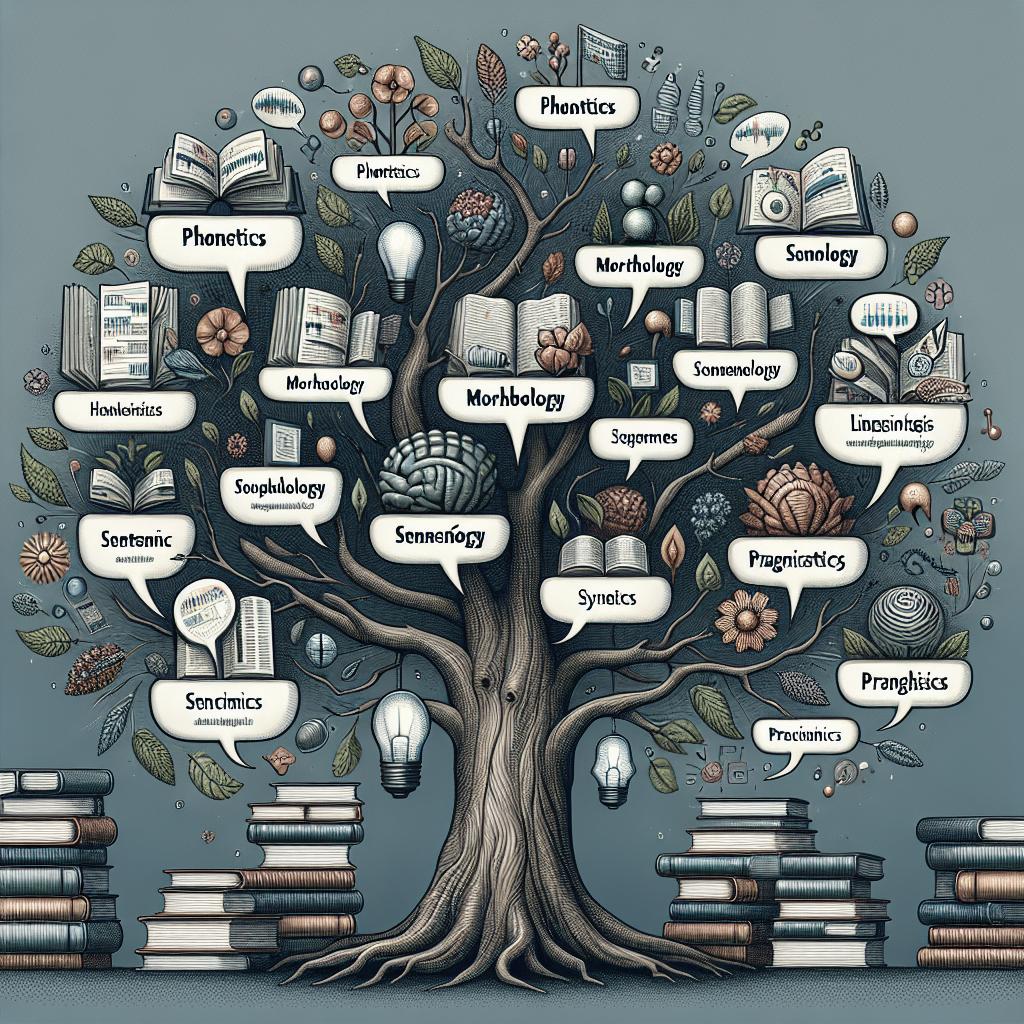<>
How to Analyze Linguistic Data Effectively Linguistic data analysis is a vital skill for anyone interested in understanding and utilizing language patterns, whether for academic research, improving communication strategies, or enhancing artificial intelligence technologies. In this detailed guide, we will walk you through the essential techniques and tools you need to analyze linguistic data effectively. From understanding the types of data you might encounter to employing statistical and computational methods, each section will provide actionable insights. You’ll also learn about the latest industry trends and best practices to keep your skills sharp and relevant.Rate this article
1
Analyzing linguistic data begins with identifying your objectives. Are you looking to understand social trends, improve machine translation, or study language evolution? Defining your goals helps you determine the types of data you need and the most suitable analysis methods. Linguistic data can come in various forms: text corpora, audio recordings, and even social media interactions. Each type of data presents unique challenges and opportunities for analysis, making it essential to choose the right tools and techniques for your specific needs.
2
Once you’ve defined your goals and identified your data sources, the next step is data collection. Data collection can involve scraping text from websites, transcribing audio recordings, or extracting social media interactions. Each method has ethical considerations, especially concerning privacy and consent, so be sure to adhere to ethical guidelines in your field. Quality data is crucial. Ensure your data sources are reliable and your data is clean. This often means filtering out noise, correcting errors, and standardizing formats, which sets the foundation for accurate analysis.
3
With your data in hand, it’s time to preprocess it for analysis. Preprocessing includes tasks such as tokenization, where text is split into individual words or phrases, and lemmatization, where words are reduced to their root forms. Natural Language Processing (NLP) tools can facilitate preprocessing. Python’s NLTK and spaCy libraries offer comprehensive solutions for tokenization, lemmatization, and other preprocessing needs. Efficient preprocessing ensures your data is ready for deeper analysis.
4
Exploratory Data Analysis (EDA) helps you understand the basic patterns and relationships within your data. Visual representations like word clouds, frequency distributions, and co-occurrence matrices provide quick insights into the data’s structure and main characteristics. Statistical measures such as mean, median, and standard deviation can also shed light on linguistic patterns. These metrics help identify anomalies and trends that are not immediately visible, laying the groundwork for more detailed analysis.
5
Advanced computational methods like machine learning can unlock deeper insights from linguistic data. Techniques such as clustering, classification, and sentiment analysis enable the identification of nuanced patterns and correlations that manual analysis might miss. Popular machine learning libraries like TensorFlow and scikit-learn can be employed for these tasks. Ensure you have a solid understanding of machine learning principles, as improper application can lead to misleading results.
6
Interpreting the results of your analysis is just as important as the analysis itself. Effective interpretation involves understanding the implications of your findings in the context of your original goals. Are there new trends you hadn’t considered? Does the data support or contradict your initial hypotheses? Communicate your results clearly. Use visual aids like graphs and charts, and be mindful of your audience’s background knowledge. Clear communication ensures your insights are accessible and actionable.
7
Finally, ensure your analysis process includes a feedback loop. Collect feedback from peers, mentors, or stakeholders to refine your methods and conclusions. This iterative approach not only improves the quality of your analysis but also keeps your skills updated with the latest trends and techniques. Engaging in seminars, workshops, and industry conferences can further enhance your expertise. Continuous learning and adaptation are key to staying proficient in linguistic data analysis.
Thanks for your feedback
Engaging your audience by seeking feedback on your analysis methods and results can offer valuable insights and perspectives you might have overlooked. Use feedback to refine and enhance your techniques continuously. Positive feedback affirms your approach and identifies areas for further exploration, while constructive criticism highlights gaps and potential improvements. Both are essential for growing your competence in linguistic data analysis.
Tell us more
We’d love to hear about your experiences with linguistic data analysis. What challenges have you faced, and what tools or techniques have you found most useful? Sharing your experiences can provide valuable insights for others in the community. Collaboration and discussion foster innovation and improvement. Your contributions can inspire new ideas and methodologies, benefiting everyone involved in linguistic research and analysis.
More articles on Linguistics
If you found this article helpful, you might be interested in exploring these related topics: – Introduction to Natural Language Processing (NLP) – Text Mining and Its Applications – The Role of Big Data in Linguistic Research These articles delve deeper into specific aspects of linguistic data analysis, offering further insights and practical advice.
Are you sure you want to delete your contribution?
Before deleting any contributions, consider the value they add to the larger discussion. Contributions, whether they’re questions, answers, or comments, enrich the community and provide diverse perspectives on linguistic analysis. If you still feel the need to delete your contribution, ensure it doesn’t remove crucial information or disrupt ongoing discussions. Thoughtful curation maintains the integrity of collaborative knowledge.
Are you sure you want to delete your reply?
Deleting a reply can impact the continuity of discussions. Replies often provide context and clarity, helping to build a comprehensive understanding of the topic at hand. If you decide that deletion is necessary, consider how you can capture the essential points elsewhere in the discussion to preserve the thread’s coherence and usefulness.
| Step | Description | Tools/Techniques |
|---|---|---|
| Define Objectives | Identify your goals and suitable data sources | N/A |
| Data Collection | Gather data responsibly considering ethical implications | Web scraping tools, transcription services |
| Preprocess Data | Clean and prepare data for analysis | NLTK, spaCy |
| Exploratory Data Analysis | Uncover basic patterns and relationships | Word clouds, frequency distributions |
| Advanced Computational Methods | Use machine learning to discover deeper insights | TensorFlow, scikit-learn |
| Interpret Results | Contextualize findings and communicate clearly | Graphs, charts |
| Feedback Loop | Iterate and improve based on feedback | Peer reviews, workshops |


